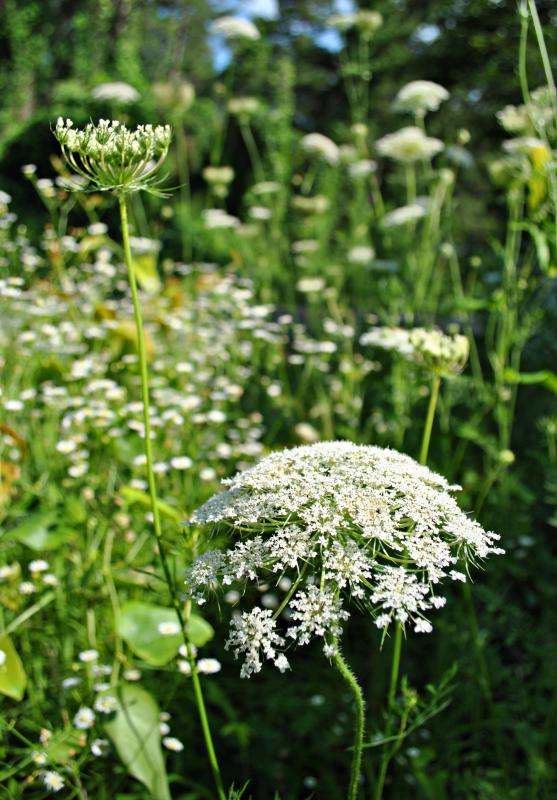At HomeQuestionsAnswered, we're committed to delivering accurate, trustworthy information. Our expert-authored content is rigorously fact-checked and sourced from credible authorities. Discover how we uphold the highest standards in providing you with reliable knowledge.
What Is Cow Parsley?
Cow parsley is Anthriscus sylvestris, a plant in the carrot family. Native to Europe and the temperate regions of Asia, it is a perennial that stands up to 60 inches (about 1.5 m) tall and has a white, lacy looking, compound flower. Parts of the plant are edible, though not particularly prized for eating, and it has sometimes been used for dye. It has been introduced in several parts of the world including North America, New Zealand, South Georgia Island, parts of Africa, Greenland and Iceland.
The tall stalks and white flowers of cow parsley are a familiar sight along roadsides in Great Britain and other parts of Europe. In addition to cow parsley, it is also called Queen Anne’s lace, keck, and wild chervil. The flower known as Queen Anne’s lace in North America, however, is a different, though related, plant. It is a member of the carrot family and may harbor the carrot root fly, making control of that garden pest more difficult.

Cow parsley usually reaches between 12 and 40 inches in height (about 30 to 100 cm) and has a long tap-root that can stretch up to 6.5 feet (about 2 m) underground. The stems are hollow and sometimes take on a purplish cast. It has white, compound, flowers measuring 8 to 24 inches (about 20 to 60 cm) in diameter. The fruits are smooth and green when they set, turning brown as they mature.

Care must be taken when harvesting cow parsley in its native range as it greatly resembles the hemlock plant, Conium maculatum, which grows in the same area. They can be distinguished by the purple spots on the stems of the hemlock plant. Hemlock also has an unpleasant and distinctive odor, unlike cow parsley.
The plant thrives in fertile ground that is moist to somewhat wet. Its presence in Europe and elsewhere has increased as formerly agricultural land has fallen out of cultivation. Cow parsley is also common along roadways, in mixed hedgerows and at the edge of forests. The plant tolerates semi-shade to full sun.
It reproduces both from seed and from spreading roots, which helps it spread rapidly and aggressively in favorable areas. Cow parsley is considered a weed in many areas, is classified as a class B noxious weed in the state of Washington. Planting cow parsley is forbidden in Massachusetts. Repeated cutting within a single season is a good method of control.
AS FEATURED ON:
AS FEATURED ON:












Discussion Comments
@Laotionne - Wild chervil is another name for cow parsley. This is the name that most people I know use when referring to the plant. The plant was often connected to witchcraft in the past, and this may still be the case. Either way, the plant does have some medical benefits and people used the plant to fight some illnesses, so you can see why getting it confused with hemlock could be a big concern.
Wild chervil is said to be good for helping the digestive system. Some people also take the herb to deal with water retention problems. The plant has several more benefits, but those are the ones I know about.
@Laotionne - Devil's parsley is actually another name for cow parsley. I see how you could be confused since cow parsley is harmless and the name Devil's parsley makes the plant sound like it might kill you or at least make you really sick.
I think the name Devil's parsley came about because cow parsley looks so much like hemlock, and people might get the two plants confused and accidentally poison themselves or someone else. However, as it says in this article, cow parsley isn't exactly the best tasting plant ever, so I don't think many people include the plant in their diets.
Has anyone ever heard of a plant called Devil's parsley? When I was a little girl, my grandmother would always warn me and my cousins to stay away from the Devil's parsley when we were playing in the woods on her farm. Is Devil's parsley another name for hemlock? This would explain why she wanted us to stay away from the plant since hemlock is poisonous.
Post your comments